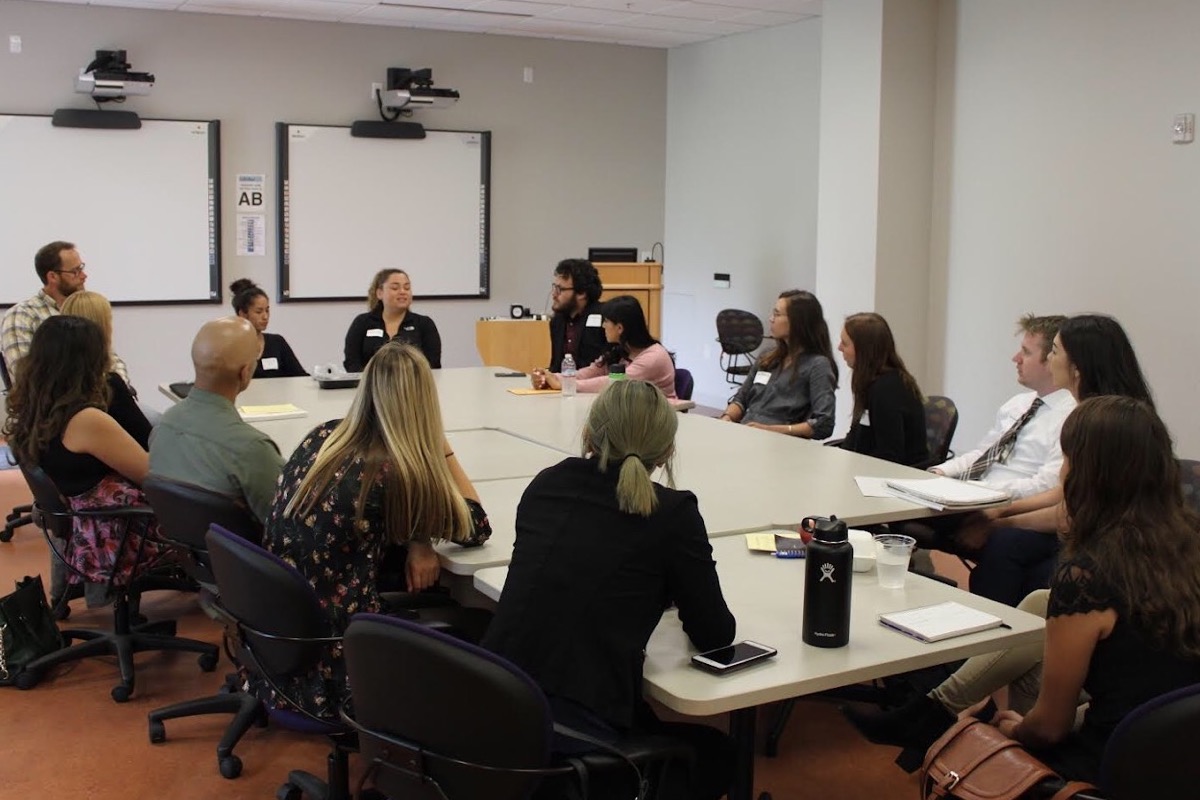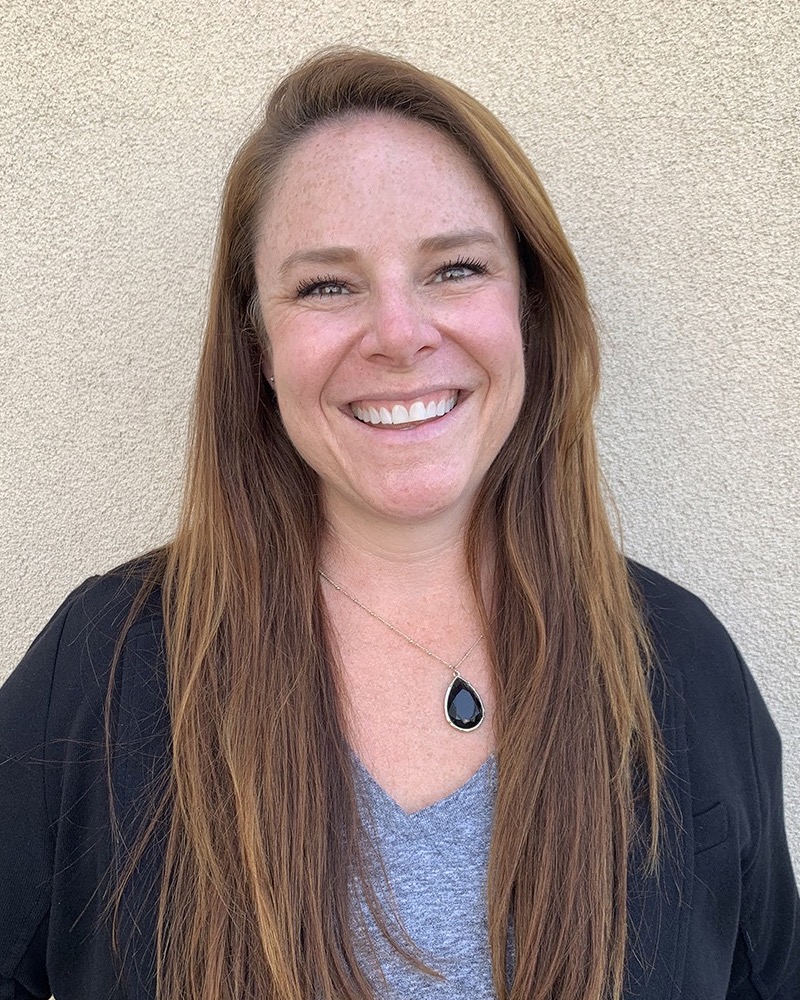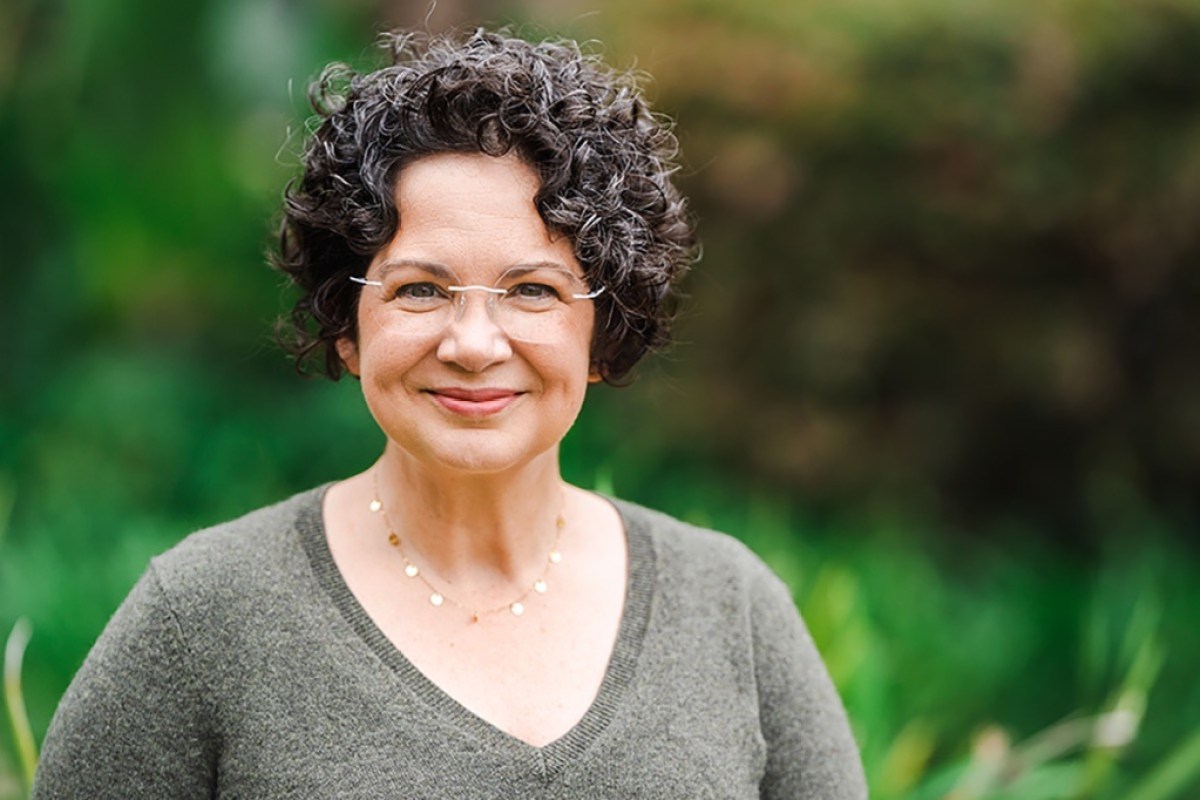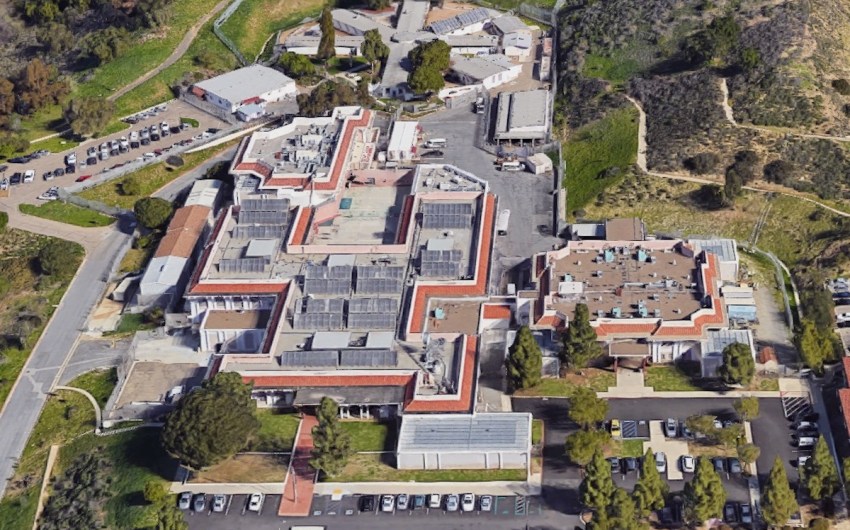Training Teachers for a Marathon
UCSB’s Gevirtz School of Education Disputes Bad Grade from National Council on Teacher Quality; Local School Districts Continue to Support Teachers Amid Curriculum Changes

[Updated: Mon., Jan. 29, 2024, 4:30pm]
If there’s anything about literacy instruction that everyone can agree on, it’s that teachers are everything. They are the be-all and end-all of classroom success.
However, they are often left to fill in the blanks when it comes to teaching reading — something two-thirds of children in the United States struggle to learn. In Santa Barbara County, 60 percent of students, approximately 42,000 children, are not reading at grade level.
Dr. Diana Arya, faculty director of UCSB’s McEnroe Reading and Language Arts Clinic, said that when it comes to major shifts in instruction, working teachers “are basically given the equivalent of a candy bar to run a marathon.”
Teacher Prep Gets an F

In my November 15 cover story on SBUSD’s new literacy program, I highlighted elementary teachers’ inadequate preparation for science-of-reading methods, such as drilling phonics instruction. Teachers overwhelmingly complained that they were drowning.
The lack of support for retraining teachers is the core of the problem, according to the National Council on Teacher Quality (NCTQ) which released a report this year that included California among those that are failing to provide adequate training. According to NCTQ President Heather Peske, only a quarter of teachers nationwide leave preparation programs ready to teach all reading components aligned with science and research.
In my previous story, I reported that the Gevirtz School of Education, UCSB’s graduate program in teacher preparation, received an “F” from the NCTQ. However, Victoria Harvey, director of the teacher education program (TEP) at UCSB, disagreed, calling the ratings “flawed.”
A letter from UC Education Deans and Chairs disputed the NCTQ’s assessment that UC teacher education programs (TEPs) “‘failed’ to prepare preservice teachers in early reading instruction.”
The letter charges that NCTQ ratings were designed “almost exclusively” to evaluate four-year undergraduate programs and do not consider graduate programs, such as theirs, that include fieldwork.
UCSB students receive hands-on experience in local elementary schools, and, last year, faculty participated in reading instruction and dyslexia training in partnership with Peabody Charter School — including an emphasis on phonics instruction.
“We’re constantly evaluating our program based on the needs of our partner schools,” Harvey added. “We’re continually trying to do better.”
That said, the NCTQ maintains that it is “the only nonprofit, nonpartisan organization solely dedicated to issues of teacher quality” and many educators and reporters alike turn to their ratings to understand the effectiveness of teacher preparation programs around the country.
By July 1, California will have stricter requirements for literacy training based on the science of reading and the state’s new literacy standards — including support for struggling readers and English learners and incorporating dyslexia guidelines for the first time.
But UCSB claims to be ahead of the game.
Reading Between the Lines
UCSB’s Gevirtz School of Education, Harvey said, has a “strong focus on phonics” but covers all aspects of reading, including fluency, vocabulary, comprehension, and phonemic awareness, the ability to identify and manipulate individual sounds in spoken words.
Simulations help teacher candidates view reading through the lens of a struggling student. For example, candidates may be told to attempt to sound out fake letters to understand how it feels to be a student who has trouble connecting letters with sounds.
Additionally, the school just partnered with Adelante Charter School for dual-language instruction to help prepare teachers to support emergent multilingual students. Harvey said they aim to increase their bilingual graduates who can teach in both English and Spanish “to meet the needs of our community.”
It all adds up to a very demanding schedule. Teacher candidates engage in fieldwork from August to June, spending four days a week in the classroom during the fall, on top of lesson planning and homework.
“They have 12-hour days,” Harvey said. “The California requirement for teacher candidates is 600 hours of fieldwork experience. Our candidates are well beyond that.”
Acknowledging this heavy burden, UCSB partnered with the Santa Barbara County Education Office for a $1 million grant to financially support their candidates. While the initial terms included staying in Santa Barbara County, the state has since allowed more flexibility due to the statewide teacher shortage. However, preference is given to those staying in the county, aligning with goals to enhance workforce diversity and address gaps in special education.
Community-Based Literacies

Dr. Diana Arya leads UCSB’s Community-Based Literacies (CBL) team, fostering collaboration between the university, local youth, and educators on literacy-focused topics.
Arya said the “how” of CBL is rooted in the science of reading, which is far from simple.
Amid current shifts in reading instruction, the focus is on the longstanding need for decoding support — being able to read words aloud (a difficult thing when learning the orthographically opaque English language).
But it’s also important to understand how young learners interact with texts, including critical thinking, vocabulary, inference-making, and automaticity, which has to do with how quickly students can recognize words.
Additionally, literacy extends far beyond reading to media consumption and cultural understanding. California’s newly revised educational standards now include lessons in media literacy and Asian American Pacific Islander history across grade levels.
These kinds of shifts in instruction have “always been happening,” Arya said. She anticipates future changes — such as multimodal instruction — but stressed the continued need for individualized support as instruction evolves.
She used the example of two 3rd-grade students assessed to be reading at a preschool level. One, she said, was an English learner with “beautiful decoding skills” but an emerging level of vocabulary, while the other had an impressive English vocabulary but struggled with decoding. “They got the same score, but they need different support,” she explained.
Arya’s point was that to enhance reading skills, comprehensive assessments and content that is relevant to students’ lives are vital.
“The more we can bring in relevant content that children can see outside school walls in their communities, the more they’re going to use that new language in the real world,” Arya said. It’ll do kids more good to read about California condors, for instance, than brown bears in Sweden.
As for support, students with strong decoding skills need just as much as students who require more explicit instruction, she continued, and teachers are “invaluable” in helping “identify strengths and needs for all students.”
Goleta Union seems to be embracing these individualized assessments with its push to science-based instruction. By screening and monitoring student progress, teachers can intervene and target missing or undeveloped skills before the child falls too far behind.
“Our district has made it clear that further educating our teachers on science-based instruction is not just a reading initiative, but something that is instrumental in setting up our students for future success,” the district said.
Arya emphasized that teachers are “second only to the original teachers, who are the parents,” but they are often not given the resources they need to hone their craft, nor the adequate coaching support to actually integrate much of the training they receive into the classroom.
Working teachers in school districts across the country are being expected to learn new instructional methods, oftentimes alongside a brand-new curriculum. Teachers “are so willing to learn,” Arya said. “But we need to give them more than a candy bar.”
Turning the Page
While 60 percent of county students struggle with grade-level reading, school districts like Santa Barbara Unified (SBUSD) and Goleta Union are aiming to have all students be proficient readers by the 3rd grade, via new programs based on the “science of reading.”
But it’s not as simple as it may sound.
“Teachers need much more than a new set of materials,” said Denise Alvarado, SBUSD’s executive director of elementary education.
During the school board’s new literacy curriculum implementation update on January 16, Alvarado said the 2023-2024 school year is dedicated to “teaching and learning” within their three-year professional learning plan.
As stressed by former SBUSD school boardmember Ruth Green, “Teacher training is where this will work or not.”
Professional development training in SBUSD and Goleta Union began in August 2023. Teachers and admin are supported by teachers on special assignment (TOSAs) and coaches trained in “Language Essentials for Teachers of Reading and Spelling,” or LETRS.
Curriculum support staff for SBUSD are in the middle of a planned 160 hours of LETRS training to “provide teachers with the skills needed to master the fundamentals of reading and writing instruction,” according to district spokesperson Ed Zuchelli.
The skills learned by the cohort of coaches and TOSAs are shared through collaborative meetings and individual coaching throughout the year, Zuchelli said.
In addition, elementary teachers were provided the voluntary opportunity to receive a total of 30 hours of Orton-Gillingham training on structured literacy instruction. In total, over the past two years, roughly 80 percent of the district’s elementary teachers completed the training.
The districts are using assessments and classroom observations to track success. In SBUSD, school administrators have been taking “learning walks” to monitor instructional progress, which has reportedly revealed motivated, collaborative teachers who have established strong relationships and routines with seemingly up-to-the-task students.
However, Washington Elementary’s principal, Arielle Curry, acknowledged that there’s been a learning curve, particularly for K-2 teachers juggling the new phonics program Fundations alongside new literacy curriculum Wit & Wisdom.
“This is far more than just a curriculum change,” dyslexia activist Cheri Rae told the school board. “It’s a paradigm shift in reading instruction, one that is likely to have not been taught to most of our educators.”
Premier Events
Sat, Nov 23
2:00 PM
Santa Barbara
Mosaic Workshop at Art & Soul
Thu, Nov 28
12:00 PM
Santa Barbara
Thanksgiving Dinner at The Harbor Restaurant
Mon, Nov 18
6:00 PM
Santa Barbara
Chaucer’s Book Talk and Signing: Afabwaje Kurian
Mon, Nov 18
7:30 PM
Santa Barbara
Lobero LIVE Presents: Mat Kearney – Headlights Home Tour
Tue, Nov 19
7:00 PM
Santa Barbara
Lecture: “Belonging on an Island – Birds, Extinction, and Evolution in Hawai’i”
Wed, Nov 20
7:30 PM
Santa Barbara
Dr. Uché Blackstock
Thu, Nov 21
5:30 PM
Santa Barbara
Koegel Autism Center Holds Neurodivergent Art Show
Fri, Nov 22
6:00 PM
Santa Barbara
Introduction to Crochet Workshop
Fri, Nov 22
7:30 PM
Carpinteria
Rod Stewart VS. Rolling Stones Tribute Show
Fri, Nov 22
9:00 PM
Santa Barbara
Numbskull Presents: Jakob’s Castle
Sat, Nov 23
7:00 AM
Santa Barbara
Nic & Joe @ Roy
Sat, Nov 23
12:00 PM
Santa Barbara
Fall 2024 Healing Arts Faire
Sat, Nov 23 2:00 PM
Santa Barbara
Mosaic Workshop at Art & Soul
Thu, Nov 28 12:00 PM
Santa Barbara
Thanksgiving Dinner at The Harbor Restaurant
Mon, Nov 18 6:00 PM
Santa Barbara
Chaucer’s Book Talk and Signing: Afabwaje Kurian
Mon, Nov 18 7:30 PM
Santa Barbara
Lobero LIVE Presents: Mat Kearney – Headlights Home Tour
Tue, Nov 19 7:00 PM
Santa Barbara
Lecture: “Belonging on an Island – Birds, Extinction, and Evolution in Hawai’i”
Wed, Nov 20 7:30 PM
Santa Barbara
Dr. Uché Blackstock
Thu, Nov 21 5:30 PM
Santa Barbara
Koegel Autism Center Holds Neurodivergent Art Show
Fri, Nov 22 6:00 PM
Santa Barbara
Introduction to Crochet Workshop
Fri, Nov 22 7:30 PM
Carpinteria
Rod Stewart VS. Rolling Stones Tribute Show
Fri, Nov 22 9:00 PM
Santa Barbara
Numbskull Presents: Jakob’s Castle
Sat, Nov 23 7:00 AM
Santa Barbara
Nic & Joe @ Roy
Sat, Nov 23 12:00 PM
Santa Barbara


























You must be logged in to post a comment.